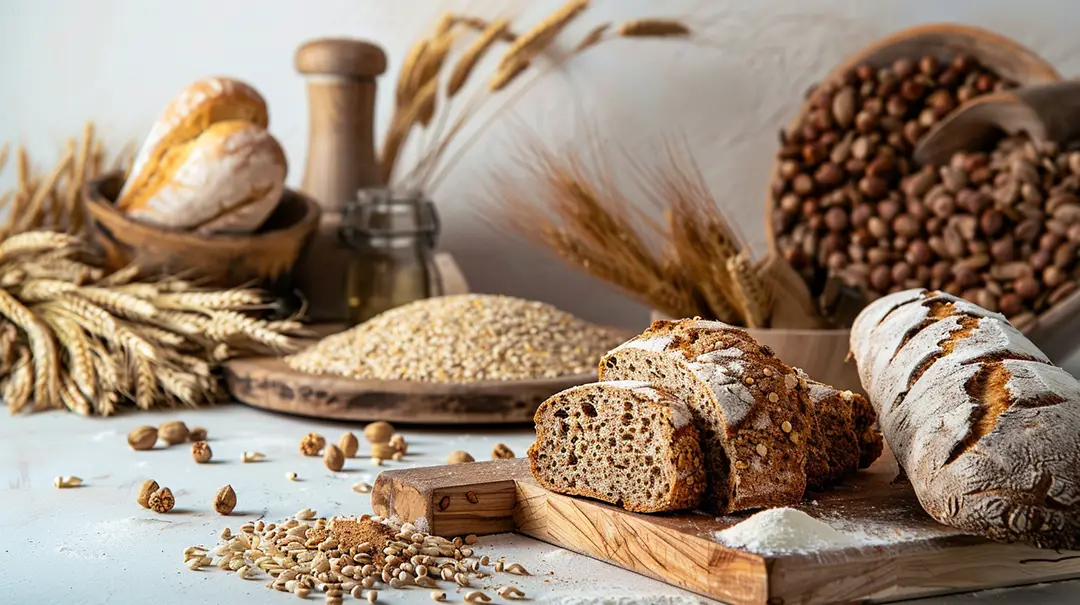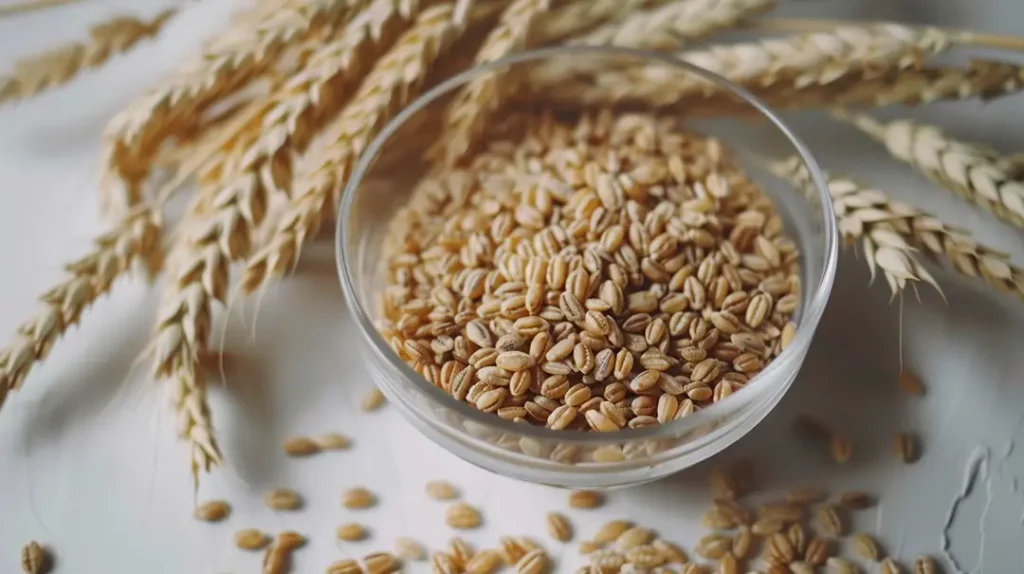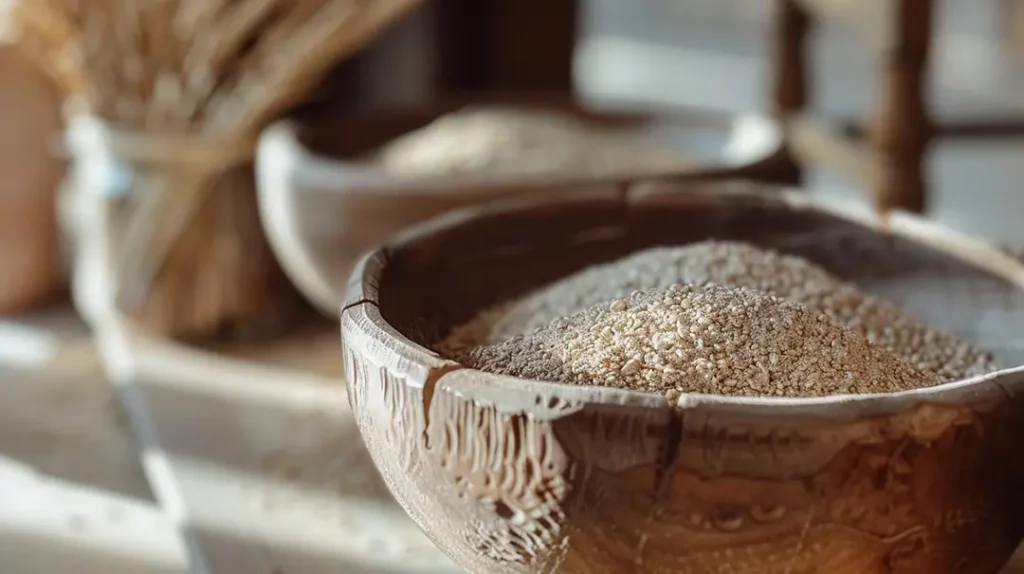
Whole grains are essential for a healthy diet, offering numerous health benefits such as brain health and disease prevention. They contain key components like bran, germ, and endosperm, providing vital nutrients and fibre. Unlike refined grains, whole grains have higher nutritional value and lower glycemic index, leading to improved overall health.
Whole grains are more than just a staple in a healthy diet; they are a key to unlocking numerous health benefits that can significantly enhance your quality of life. From supporting brain health to reducing the risk of chronic diseases, the inclusion of whole grains in your daily meals can lead to profound and lasting improvements in well-being. In this article, we will explore what makes whole grains so special, delve into their diverse types, and uncover the many ways they contribute to a healthier, happier you. Whether you’re a seasoned health enthusiast or just starting your journey towards better eating habits, understanding the value of whole grains is a crucial step in making informed dietary choices.
Whole grains are a nutritional powerhouse, offering a wide range of health benefits compared to their refined counterparts. From oats and quinoa to barley and brown rice, these grains retain all parts of the kernel – the bran, germ, and endosperm – providing essential nutrients, fibre, and compounds that support digestive health, heart health, and overall wellbeing. To be classed as a whole grain, the entire grain seed must be present, including the bran, germ, and endosperm. Even if kernels are cracked, crushed, or rolled, they retain their whole grain status as long as these three components are intact. Whole grains are packed with nutrients that are often lost in processed grains.
The kernel of a whole grain consists of three essential parts: the bran, germ, and endosperm. The bran, the outer layer, is rich in fibre, B vitamins, and antioxidants. The germ, the nutrient-dense core, contains healthy fats, vitamin E, B vitamins, and minerals. The endosperm, the largest portion, primarily consists of starchy carbohydrates and some proteins. For a grain to be classified as whole, all three components must be present in their original proportions, ensuring the grain retains its full nutritional value.
Unlike refined grains, which have had the bran and germ removed, whole grains retain all three parts of the kernel, resulting in significantly higher nutritional value. Whole grains are richer in fibre, vitamins, minerals, and phytochemicals compared to their refined counterparts. They have a lower glycemic index, meaning they cause a slower, more gradual rise in blood sugar levels. This nutritional superiority translates to various health benefits, including better weight management, improved digestive health, and reduced risk of chronic diseases such as heart disease and type 2 diabetes.

Whole grains are nutritional powerhouses. They are rich in fibre, vitamins (such as B vitamins and vitamin E), minerals (including iron, magnesium, and selenium), and antioxidants. These nutrients play crucial roles in maintaining good health, from boosting your immune system to supporting heart health.
There is a wide variety of whole grains to choose from, each with its unique taste and nutritional profile. Some common whole grains include:
Whole grains offer numerous health benefits, supported by scientific research:
Several whole grains stand out for their digestive benefits due to their high fibre content and prebiotic properties. Oats and barley are particularly beneficial, containing beta-glucans that form a gel-like substance in the gut, aiding digestion and nutrient absorption. Quinoa, a complete protein source, and brown rice are gentle on the stomach and support regular bowel movements. Rye and buckwheat have prebiotic effects, promoting the growth of beneficial gut bacteria. For those with gluten sensitivities, gluten-free options like millet and sorghum offer digestive benefits while being easy to digest.

Ancient grains are varieties of grains and pseudocereals that have remained largely unchanged for thousands of years, in contrast to modern grains that have undergone extensive selective breeding. Examples include amaranth, quinoa, spelt, and Kamut® Khorasan wheat. While ancient grains are often marketed as more nutritious, they are not inherently healthier than modern whole grains. Both ancient and modern grains can be whole grains if they retain all parts of the kernel – bran, germ, and endosperm. The key difference lies in their genetic modification over time, not their whole grain status. Many ancient grains are gluten-free or lower in gluten, making them suitable for people with certain dietary restrictions. However, nutritionists emphasize that common whole grains like brown rice, oats, and whole wheat also offer similar nutritional benefits, often at a lower cost.
Kamut® has a registered trademark sign because it is a brand name for a specific type of ancient wheat, officially known as Khorasan wheat. The trademark is owned by Kamut International, which ensures the quality and authenticity of the grain marketed under this name. The registration helps protect the brand and guarantees that products labeled as Kamut® meet specific standards and are grown organically. This branding differentiates it from other types of Khorasan wheat that might not adhere to the same quality controls.
A pseudocereal is a plant that produces starchy seeds used similarly to cereal grains in food production, but does not belong to the grass family (Poaceae) like true cereals. These plants are called “pseudo” cereals because they resemble cereals in use and nutrition, despite being botanically distinct. Common examples include amaranth, quinoa, and buckwheat. Pseudocereals are often valued for their nutritional profiles, containing high levels of essential amino acids, fatty acids, minerals, and some vitamins. They are also naturally gluten-free, making them popular alternatives for those with gluten sensitivities or celiac disease. While pseudocereals are less globally significant than true cereals, they play important roles in certain regional diets and are gaining popularity as nutritious, gluten-free options in many parts of the world.
Integrating whole grains into your meals doesn’t have to be a chore. Here are some practical tips:

While whole grains are beneficial, some individuals may need alternatives due to dietary restrictions, such as gluten intolerance. Gluten-free options like quinoa, buckwheat, and millet can provide similar benefits without causing discomfort.
Whole grain cereals offer a multitude of benefits from both health and culinary perspectives. Nutritionally, they are rich in fibre, B vitamins, minerals, and antioxidants, contributing to improved heart health, better digestion, and reduced risk of chronic diseases. For instance, bulgur wheat, used in tabbouleh, adds a hearty texture and nutty flavour. Chewy brown rice adds depth to stir-fries, while nutty quinoa elevates salads. Whole wheat flour imparts a robust flavour to baked goods, and steel-cut oats create a hearty breakfast porridge. The variety of whole grains available, including ancient grains like amaranth and modern options like whole wheat, allows for culinary creativity and versatility in cooking. Additionally, the slower digestion of whole grains helps maintain satiety, making them valuable for weight management and blood sugar control. From a sustainability standpoint, whole grains often require less processing than refined grains, potentially reducing their environmental impact.
Embracing whole grains is not just about adding another food group to your diet; it is about investing in your long-term health. The fibre, vitamins, and minerals found in whole grains help protect against chronic diseases, support a healthy digestive system, and contribute to maintaining a healthy weight. Moreover, the versatility and variety of whole grains ensure that you can enjoy a wide range of flavours and textures, making your meals both nutritious and enjoyable. Whether you are looking to improve your heart health, manage your weight, or simply enhance your overall well-being, whole grains provide a simple and effective solution. So, next time you plan your meals, make sure to include these powerful grains and experience the benefits they bring to your life.

At Med.kitchen, our passion lies in crafting exceptional culinary experiences through our online platform. We specialise in sharing a wealth of knowledge via articles, recipes, courses, and online mentoring, aiming to inspire both novice and seasoned chefs alike. Our focus has shifted from private dining to being an online source of gastronomic inspiration, allowing you to explore and refine your culinary skills from the comfort of your home..